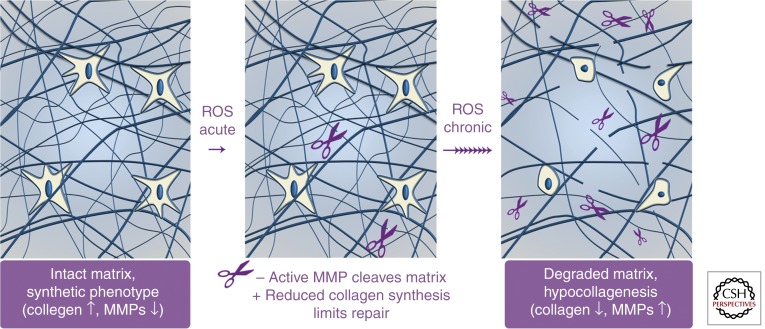Figure 3.
Accumulation of fragmented collagen in the dermal extracellular matrix leads to sustained reduction of collagen production in chronologically aged and photoaged human skin. (Left panel) In young skin, intact collagen within the dermal extracellular matrix provides attachment sites and mechanical resistance for fibroblasts. Fibroblasts are able to stretch and, under relatively high mechanical tension, show normal collagen homeostasis (collagen production is high, MMP production is low). (Middle panel) On exposure to UV irradiation (photoaging) or oxidative stress (chronological aging), elevated ROS activate signaling cascades that promote reduced collagen synthesis and increased MMP production. Active MMPs cleave the collagenous extracellular matrix, whereas reduced procollagen production limits repair. (Right panel) Accumulation of collagen fragments, which occurs with chronic UV exposure and the passage of time, impairs the mechanical and functional properties of the dermal extracellular matrix. Fibroblasts respond to this degraded dermal extracellular microenvironment by up-regulating MMP expression and down-regulating collagen production, thereby creating a self-sustaining phenotype that promotes skin fragility and age-related diseases.

